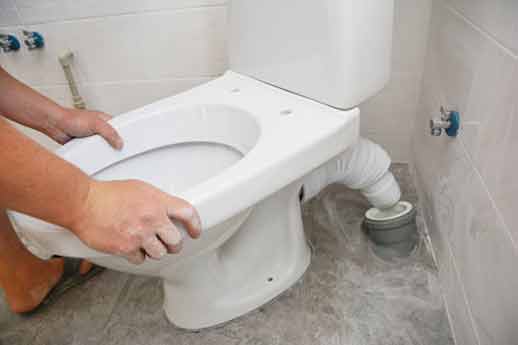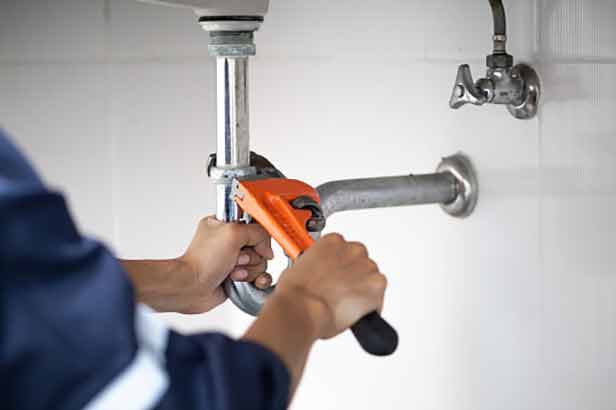
Should you hire a professional plumber to install your new toilet?
Some people will say that you should not. But installing a toilet involves many small detailed steps that require the person doing the job to have a certain level of plumbing know-how, says Propertycare Management. It is one of those plumbing jobs that look simple but have a huge potential to go wrong.
It makes sense to always hire a professional plumber when installing a toilet because problems caused by a single minor error can end up costing you multiple times the money you tried to save. Even worse, those problems can force you to buy a new toilet.
Here are some of the common mistakes people make when installing a toilet:
Common toilet installation mistakes
The toilet is not sealed properly
To prevent leaks from the bottom of your toilet, it is essential to seal it properly. This is done by applying a wax seal during the installation. But if the new wax ring is not done properly, the toilet will leak and bad odors can escape into the home.
Loose pipe connection
Because toilets handle a lot of water, there are many sites where leaks can happen. The chances that a toilet will leak are higher if its different components are not properly connected. Some of these leaks are so small that they are hard to detect.
Using the wrong toilet set-out
The set-out is the distance between the wall and the outlet pipe underneath the toilet bowl. This distance varies depending on several factors. Using the wrong set-out when installing your toilet will cause it to malfunction.
The toilet is wobbly
The constant movements of a toilet seat weaken the wax seal and pipe connections. An unstable toilet is also likely to crack and poses a risk of serious injury to users. If a toilet is loose, the bolts are not properly tightened.
Ignoring existing plumbing issues
A toilet installation is the best time to address existing problems in your toilet. If this is not done, your new toilet will inherit the problems that damaged your old toilet. This does not make any sense at all.
The potential effects of these mistakes can be far-reaching.

Hiring a plumber to install your toilet should not be viewed as a cost but an investment in the proper functioning and longevity of your toilet and other home features.
Problems from poor toilet installation
Three common problems that result from installing a toilet incorrectly are:
Expensive water damage
Water from a leaky toilet may seep into the drywall, flooring, insulation and other parts of your building. The resulting damage can cost thousands of dollars to fix.
Health problem
Mold growth due to persistent toilet leaks can cause a range of health problems among family members; itching, asthma, headaches, dizziness, nausea, redness of the eyes, allergies, and much more.
Costly repairs
The main goal of installing it yourself is to save money. But that goal will be defeated if you are forced to spend money on problems caused by the installation.
Why you should hire a plumber for toilet installation
Here are five reasons to always hire a professional plumber to install a new toilet.
Protect your warranty
Toilet manufacturers will void your warranty if the toilet is not installed by a licensed plumber. This is because they have no way of knowing that the reported problems are not caused by incorrect installation. To ensure that the right procedures are followed, manufacturers always insist that toilet installations be done by an expert.
Prevent leaks
Toilets can leak water into their surrounding areas or run continuously. The first problem will lead to costly water damage, while the second will inflate your water bills. Both issues can be avoided. A professional plumber will help you to minimize the risk of leaks by installing your toilet correctly.
Avoid structural damage
An improperly installed toilet poses a risk to the structures of your building. If your toilet is unstable it will put unnecessary strain on the flooring. The constant movement of the toilet seat can damage your subfloor and lead to expensive damage. Hidden leaks from a toilet can also discharge water into the walls, flooring and ceiling.
Improved water usage
Your toilet can cost or save you money each time you flush it; a lot depends on your choices when installing a toilet. To ensure efficient water usage you need to choose the right toilet and also install it correctly. Mistakes when selecting and installing a toilet are easy to avoid if you hire a professional plumber.
Longer lifespan
Your toilet is unlikely to develop mechanical problems if it is installed by a professional plumber. Although toilets are sturdy enough to hold your weight they are not built to endure some strain. Incorrect installation is one reason why a new toilet starts to show signs of mechanical damage a few years after installation.
Hiring a plumber to install your toilet should not be viewed as a cost but an investment in the proper functioning and longevity of your toilet and other home features.

